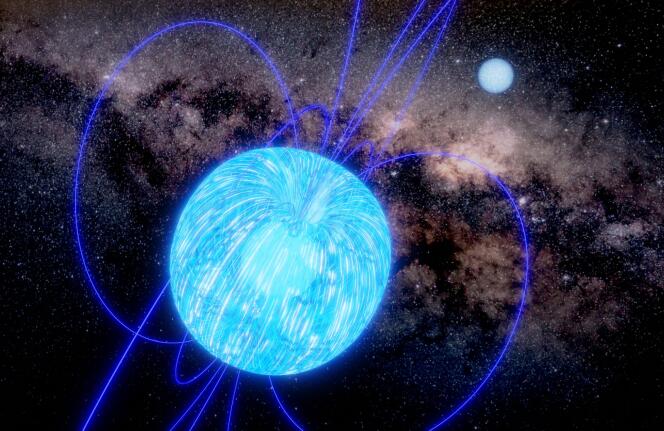


The Milky Way keeps delivering unexpected treasures, strange celestial objects with characteristics that have never been encountered before which can shed new light on some of our darkest secrets. Observed for just over a century, one pair of stars in the Unicorn constellation, over 3,000 light-years from Earth are doing just that. The pair, dubbed "HD 45166," consists of two fairly massive stars, respectively 3.4 and 2 times the mass of the Sun, which revolve around each other over 128 days. The lighter of the pair could be the gatekeeper to one of the mysteries of the cosmos: the formation of magnetars – compact blackhole-like objects that emit a gigantic magnetic field. By "gigantic," we mean more than 10 billion teslas, i.e. around 1 trillion times greater than the average magnetic field of the Sun, or 200 trillion times greater than the Earth's magnetic field.
These magnetars, some 20 or more of which have been observed in our galaxy, belong to a large family of neutron stars, stars that are extremely dense with a radius of around ten kilometers, but weigh as much as one and a half times the Sun. This is often how giant stars end their lives, once they have burned off their hydrogen and imploded. Pulsars are very specific neutron stars that emit regular radio waves toward Earth. Magnetars are another category with very intense magnetic fields, but of unknown origin.
This is where HD 45166 and an international collaboration between some 15 researchers come in, publishing their observations in Science, on August 17. "I'd been obsessed with HD 45166 for several years because what we knew about the system didn't add up. I read everything that came out about it," recalled Tomer Shenar, now at the Astrobiology Center in Madrid. Officially, the least massive star in the HD 45166 system was classified as a Wolf-Rayet star, a star composed of helium, which has lost its hydrogen and emits strong winds, ejecting surrounding matter at several hundred kilometers per hour. "But it was less luminous than the others in this category. Its winds were ten times weaker," noted Shenar, adding that its light signature, or spectrum, didn't match its family either: in addition to helium, there was a lot of carbon, oxygen and nitrogen... What's more, the spectrum is highly variable over time, with some elements literally disappearing.
One detail about the spectrum then led the researcher to think that it might not be impossible – although never before encountered – that this star generates a very strong magnetic field, which would explain the peculiarities. "Experts were skeptical," Shenar admitted. None of the thousand Wolf-Rayet stars in the Milky Way resembles a magnet.
You have 50.84% of this article left to read. The rest is for subscribers only.
